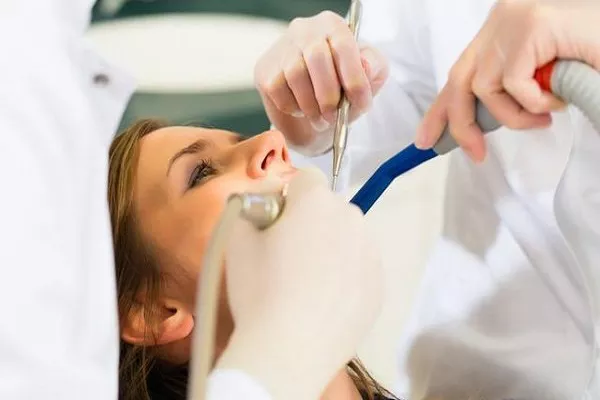Gingivitis, an early stage of gum disease, is characterized by inflammation of the gum tissues surrounding the teeth. It often manifests as redness, swelling, and bleeding of the gums, especially during brushing or flossing. While professional dental care is essential for treating gingivitis, there are several effective measures you can take at home to manage and even reverse its symptoms. In this article, we will explore the best ways to get rid of gingivitis at home, including oral hygiene practices, lifestyle adjustments, and preventive strategies to maintain optimal gum health.
Understanding Gingivitis
Gingivitis is primarily caused by the accumulation of plaque—a soft, sticky film of bacteria—on the teeth and gums. Plaque buildup can lead to irritation and inflammation of the gum tissues, causing gingivitis. If left untreated, gingivitis can progress to more severe forms of gum disease that can lead to tooth loss and other oral health issues.
Best Practices for Managing Gingivitis at Home
Maintain Excellent Oral Hygiene:
The cornerstone of managing gingivitis is maintaining proper oral hygiene practices. Follow these guidelines for effective home care:
Brushing: Brush your teeth at least twice a day with a fluoride toothpaste. Use a soft-bristle toothbrush and gentle circular motions to clean both the teeth and gums. Be thorough but avoid aggressive brushing, as it can worsen inflammation.
Flossing: Floss daily to remove plaque and food particles from between the teeth and along the gumline. Proper flossing helps prevent the buildup of harmful bacteria.
Rinsing: Use an antimicrobial or antiseptic mouthwash to reduce bacterial growth and maintain a fresh breath.
Use a Quality Toothbrush and Toothpaste:
Invest in a high-quality toothbrush with soft bristles to minimize gum irritation. Choose a toothpaste that contains fluoride to strengthen tooth enamel and fight bacteria.
Adopt a Gum-Friendly Diet:
Your diet plays a role in your oral health. Consume a diet rich in fruits, vegetables, whole grains, lean proteins, and low-fat dairy. Limit sugary and acidic foods, as they can contribute to plaque formation.
Stay Hydrated:
Drinking plenty of water helps flush away food particles and bacteria from the mouth, promoting a cleaner oral environment.
Quit Smoking and Tobacco Use:
Smoking and tobacco use can exacerbate gum inflammation and hinder the body’s ability to heal. Quitting tobacco is crucial for improving gum health.
Manage Stress:
Chronic stress can weaken the immune system, making it harder for the body to fight infections like gingivitis. Practice stress-reduction techniques such as meditation, deep breathing, yoga, or regular exercise.
Avoid Mouthwashes with Alcohol:
Alcohol-based mouthwashes can dry out the mouth and potentially worsen gum inflammation. Opt for alcohol-free mouthwashes that offer antibacterial benefits.
Oil Pulling:
Some individuals find oil pulling with coconut oil to be helpful in reducing plaque and bacteria. Swish a tablespoon of coconut oil in your mouth for about 15-20 minutes before spitting it out and rinsing with water.
Warm Saltwater Rinse:
Gargling with warm saltwater can help soothe gum inflammation. Dissolve half a teaspoon of salt in a cup of warm water and rinse for 30 seconds before spitting.
Regular Dental Visits:
While home care is essential, regular dental check-ups are vital for professional cleaning, assessment of gum health, and early detection of any oral issues.
Preventive Measures for Maintaining Optimal Gum Health
Use Interdental Cleaning Aids:
In addition to flossing, consider using interdental brushes or water flossers to clean between teeth and remove plaque from hard-to-reach areas.
Regularly Replace Toothbrushes:
Replace your toothbrush every 3-4 months or sooner if the bristles are frayed. Worn bristles are less effective at removing plaque.
Limit Acidic Beverages:
Acidic beverages like citrus juices and sodas can erode tooth enamel and contribute to gum irritation. Consume them in moderation and rinse your mouth with water afterward.
Choose the Right Toothpaste:
Select a toothpaste that is specifically formulated for gingivitis or gum health. These toothpastes often contain ingredients that target bacteria and inflammation.
Conclusion
Managing gingivitis at home involves a combination of effective oral hygiene practices, lifestyle adjustments, and preventive strategies. By maintaining excellent oral hygiene, using quality dental products, adopting a gum-friendly diet, managing stress, and avoiding tobacco use, you can effectively address gingivitis symptoms and promote optimal gum health. Remember that while home care is crucial, regular dental visits are essential for professional cleanings, assessments, and guidance in managing gingivitis and preventing its progression to more severe gum disease. By incorporating these practices into your daily routine, you can take proactive steps towards achieving and maintaining a healthy, vibrant smile.
Related Topics:































